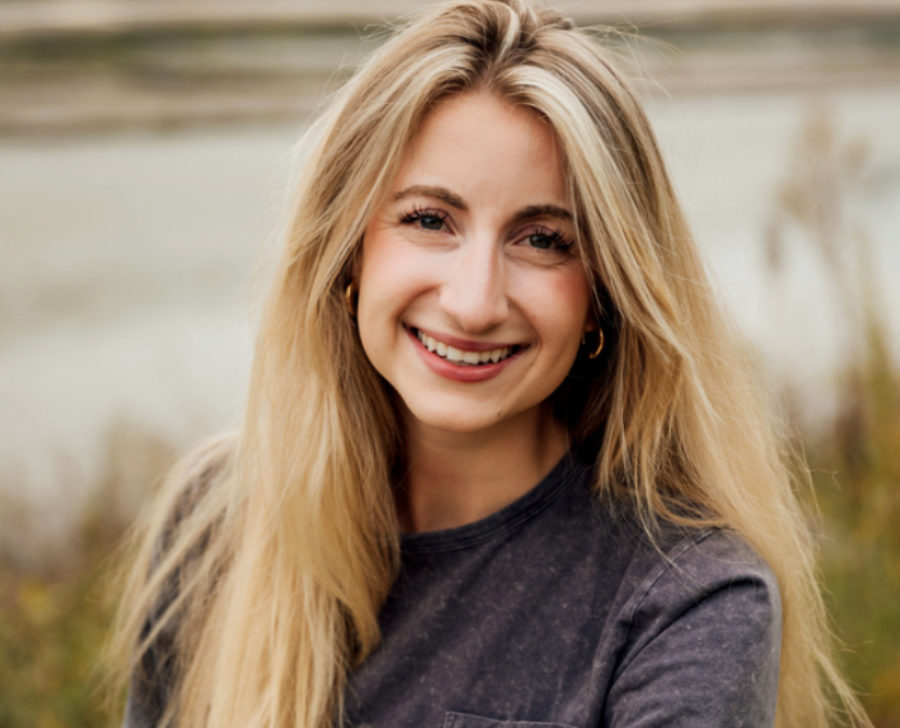Staff Spotlight: Lawryn Fraley
Lawryn Fraley, Student Affairs Program Coordinator at C-SED, recently sat down with storyteller Sydney Moore to answer some questions about her role at C-SED and what she’s looking forward to this year.
Story by Sydney Moore
How did you become involved with C-SED?
I fell across the job posting while looking to move to the area. When I realized how well my background complemented the role, I felt like it was an anomaly that I had to take advantage of. For instance, the role included the creative pieces which were often missing in my earlier positions. It also combined development, problem solving, student engagement, and marketing elements.
What drew you to this particular role?
I appreciated the emphasis C-SED put on socially engaged design even during the interview process. SED is fascinating to me and I love a human-centered approach to problem-solving.
However, it was the people that really convinced me. They were funny, inviting, and patient. I could tell right away that they were enthusiastic about what they do, which is what I look for in a workplace environment.
Describe your role at C-SED
I work directly under Erin Moore, the Associate Director for Engagement Strategy, as the Student Affairs Program Coordinator. I assist in engaging students across digital platforms, collecting data to improve our retention and involvement rates.
I’m pretty new to this position, but I’ve already gotten the sense that my work can be adapted as I discover my passions. For instance, while it is not in my job description, I would love to be a storyteller for C-SED, making our work accessible to those beyond the design headspace.
Any advice for those considering your role or career path?
If you are a student who isn’t set on a certain career path, I would argue that the majority of the battle is knowing what you don’t wanna do. For instance, I knew that I didn’t want to be a journalist or an academic advisor, but rather I wanted something in-between. When I was in my undergrad, not being able to name a particular job title that I was interested in gave me a lot of anxiety. Over time I’ve realized that there are ways to fit jobs to your specific interests. Just because you don’t know the name of a role right now doesn’t mean that it doesn’t exist. Moreover, you should find ways to be excited about learning, since the tools, ideas, and culture are changing so rapidly.
Any unexpected parts that surprised you?
I was recently introduced to the project groups within the College of Engineering. I was so impressed with their passion and drive to independently create work groups for the purpose of solving specific issues. Going forward, I’m excited to help them tell their stories, sharing their creative solutions with the world.
What have you learned in your role at C-SED?
Through C-SED I have been exposed to the communal nature of design, and how to create solutions to broader issues. The only prior design experience I’d had was much more individualistic. During my graduate program at Bowling Green State University, we used an adapted approach based off of the book Designing Your Life by Bill Burnett and Dave Evans for all undergraduate curriculum. Instead of assigning students an academic advisor and major advisor, we used life coaches to backwards engineer steps towards achieving your career goals. In my role at C-SED, I am eager to apply both logics.
What do you like most about working at C-SED?
I like the collectivist attitude: it’s all about the people, the team, ‘the C-SED family.’ C-SED makes a point to invite students back into the space, referencing all populations under the term ‘we’ to make everyone feel valued. At C-SED, I know I can always collaborate on my ideas and my colleagues will be just as invested as I am. This energy and dedication trickles down into the interactions we have with students.
How has your career path developed over time?
I have a marketing background: within my bachelors I focused on journalism and communication with a concentration in informatics. This included data storytelling, voting work, and digital storytelling for the purpose of increasing accessibility. One of the projects I worked on involved looking at public speed camera data. I turned the data into a visual presentation for those who aren’t data-minded so they could look at an infographic and immediately grasp the main takeaways. I’ve also done some work for broadcast. As an intern for KCRG, I reported mainly on the Emerald Ash Borer – an invasive beetle that destroys woodland areas in the Midwest – and created an interactive map of the sightings in my state.
However, I thought I wanted to go into art growing up! In fact, I declared an art major in my first year of college because I wanted to be a conservationist. Then I found out that you had to double major in chemistry, which wasn’t so appealing to me, so I switched to an open major. That’s when I started to think about journalism, but you have to be able to make people uncomfortable when uncovering the truth. So then I thought about PR, and I got my broadcast internship. Yet, I felt like I needed more variety, and I missed working with students, so I found myself applying to graduate programs for student affairs and higher education administration work.
Any favorite design tools everyone should try?
I love Knight Lab by Northwestern for digital storytelling because you can embed anything, such as clickable audio clips into text.
While this is not design related, I also love this app called Libby. I use it to borrow audiobooks from my local library for free. It’s easy to use, especially for those with dyslexia, and it includes support for multiple languages. One of my favorite features is that you can easily speed your audiobooks up.


